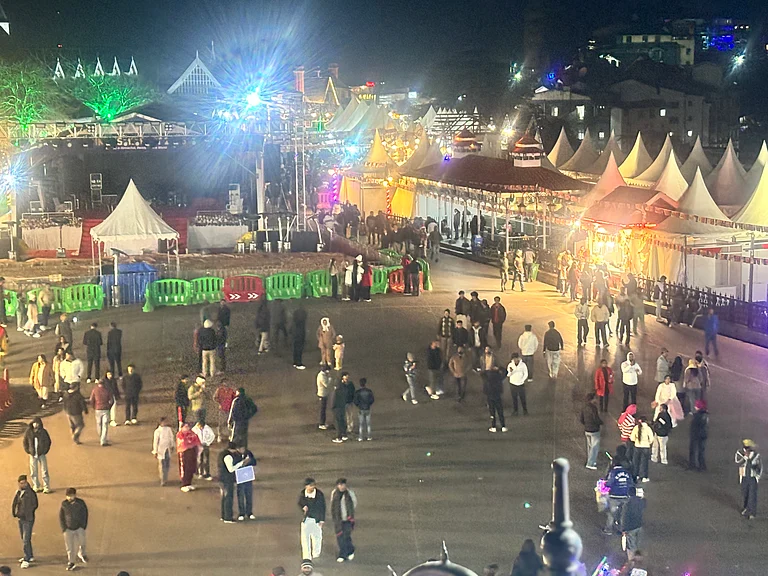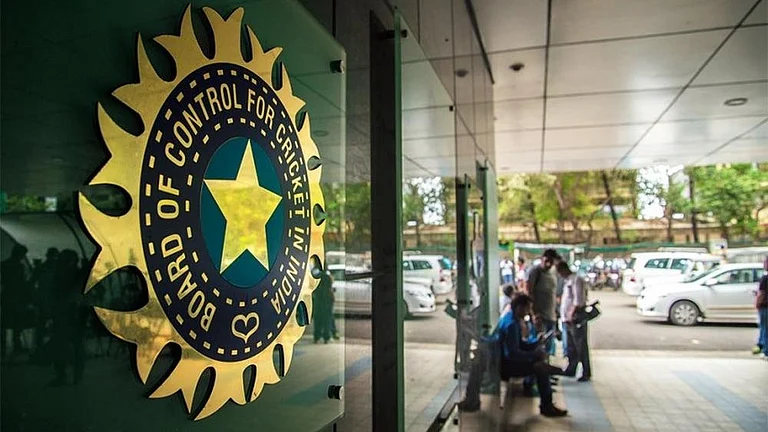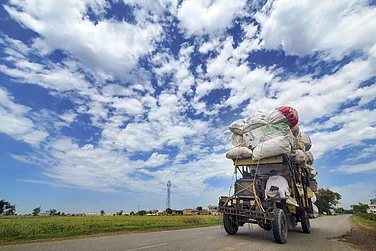Bihar chief minister Nitish Kumar may have backed the candidature of Droupadi Murmu, the BJP’s choice for the next president, to the hilt but he is far from toeing the line of his saffron ally on each and every issue. Given his stand in the last two presidential polls in 2012 and 2017, when he defied his erstwhile coalition to vote for candidates of rival alliances—the UPA’s Pranab Mukherjee and the NDA’s Ramnath Kovind, respectively—all eyes were on the JD(U) stalwart recently but he played by the rulebook by backing Murmu’s candidature.
This time, however, the BJP did not leave any scope for Nitish to have second thoughts over NDA’s choice of a tribal woman as the next occupant of Rashtrapati Bhawan. But, as other political developments of recent times suggest, Nitish has been steadily trying to reassert his dominance within the alliance. He has taken a firm stand on several key issues, right from rewriting of history textbooks to the need for caste census, to apparently underline the fact that he is not ready to play second fiddle anymore.
“How can you change history? It is beyond my understanding how history can be changed? History is what it is. History is history,” Nitish told reporters when he was asked about a recent comment by Union home minister Amit Shah.
It is not the only issue where Nitish has taken a divergent stand from the BJP. On other important issues such as caste census and population control also, he has minced no words to indicate that he is not ready to change his opinion despite having forfeited his ‘big brother’ status within the alliance to the BJP in the November 2020 assembly elections. The JD won just 43 seats, 21 less than its ally BJP. The RJD emerged as the single largest party by winning 75 seats in the 243-member House.
This was the first time since the end of the RJD rule in 2005 that the JD(U) had fallen behind the BJP in any assembly election. Yet, Nitish occupied the chief minister’s chair in keeping with their pre-poll agreement. It is an altogether different matter that he has since been facing a different BJP. The BJP’s ambitions appear to have since soared to such an extent that it has prompted many political analysts to assume that sooner or later Nitish would have to hand over the remote control of his government to his alliance partner.

But, almost 20 months after the formation of the government, Nitish seems to be clawing back to put the BJP on the back foot. On June 1, he called an all-party meeting on a proposed caste census, forcing the BJP to participate in it. Earlier, the state BJP leadership had clarified that the party believed in only two castes—rich and poor. Political pundits believe that the BJP had to take a U-turn because Nitish and RJD chief Lalu Prasad have been on the same page on the issue. The sudden meeting of Nitish and Tejashwi Prasad Yadav, on the heels of their rendezvous at each other’s iftar party, might also have forced the BJP to change its stand. Also, in a state like Bihar, where caste equations are still an integral part of electoral strategy, the saffron brigade could not afford to let the JD(U) and the RJD become close again.
For Nitish, it came as a double bonanza. On the one hand, it forced the BJP to clarify its stand on the caste census, and on the other, it deprived the RJD of the credit of walking away with all the political mileage on the issue. The RJD was, of course, the first to raise the demand for a caste census in the country. Ahead of the 2014 Lok Sabha polls, Lalu had demanded that the report of a survey conducted in 2011 by the then Manmohan Singh government to ascertain the population of different castes be made public. The RJD chief had claimed that the number of deprived and backward castes had increased considerably since the last caste census conducted in 1931. He asserted that there was a need now to take a fresh look at the reservation and other policies. However, Nitish later got the resolution of the caste census passed unanimously from the assembly and sent to the Centre.
Last year, an all-party delegation from Bihar led by Nitish, which also included Tejashwi, met Prime Minister Narendra Modi, but the Centre subsequently took no initiative on the matter. In fact, the minister of state for home Nityanand Rai announced in Parliament that the central government had no proposal to conduct any caste census except for Scheduled Castes and Scheduled Tribes. However, BJP leaders later clarified that state governments were free to conduct the caste census at their own level.
Evidently, it was Nitish’s chance to kill two birds with the same stone. Not surprisingly, within a week of the all-party meeting, his government expedited its initiative to conduct a caste census in Bihar. He announced that all Biharis living in and outside the state would be counted, irrespective of their religion. It came after Bihar BJP president Sanjay Jaiswal cautioned the state government against counting Rohingya and Bangladeshi Muslims. Nitish now wants to complete the process by February next year. His government has not only mobilised the necessary funds but has also decided to hire retired census personnel. Obviously, Nitish has set his sights firmly on the 2024 general elections and the 2025 assembly elections.
Besides, Nitish’s opinion on the demand for the introduction of legislation for population control is also different from that of BJP leaders. Recently, after Union minister Giriraj Singh strongly advocated enactment of a law in this regard, Nitish referred to China, saying that such laws were not at all effective. He said that educating girls was the best way to bring down the fertility rate. In 2005, when he became the chief minister, the fertility rate in Bihar was 4.3, which has now come down to three and may go down further to two in the next four-five years, he said. BJP leaders, however, do not seem to be buying his theory.
Nitish’s recent stand on such issues shows that despite losing his political ground in the last assembly elections, he is trying to check the growing ambitions of his ally and regain his foothold. This seemed difficult a few weeks ago when speculation was rife in political circles that he might be made the presidential or vice-presidential nominee of the NDA to facilitate the formation of a BJP-led government. But the way he played his cards to deny his once-trusted ally and Union minister R.C.P. Singh, a third Rajya Sabha term allegedly for his growing proximity with the BJP indicated that Nitish is not ready to cede any more ground to his saffron ally.
(This appeared in the print edition as "Holding His Ground")


























